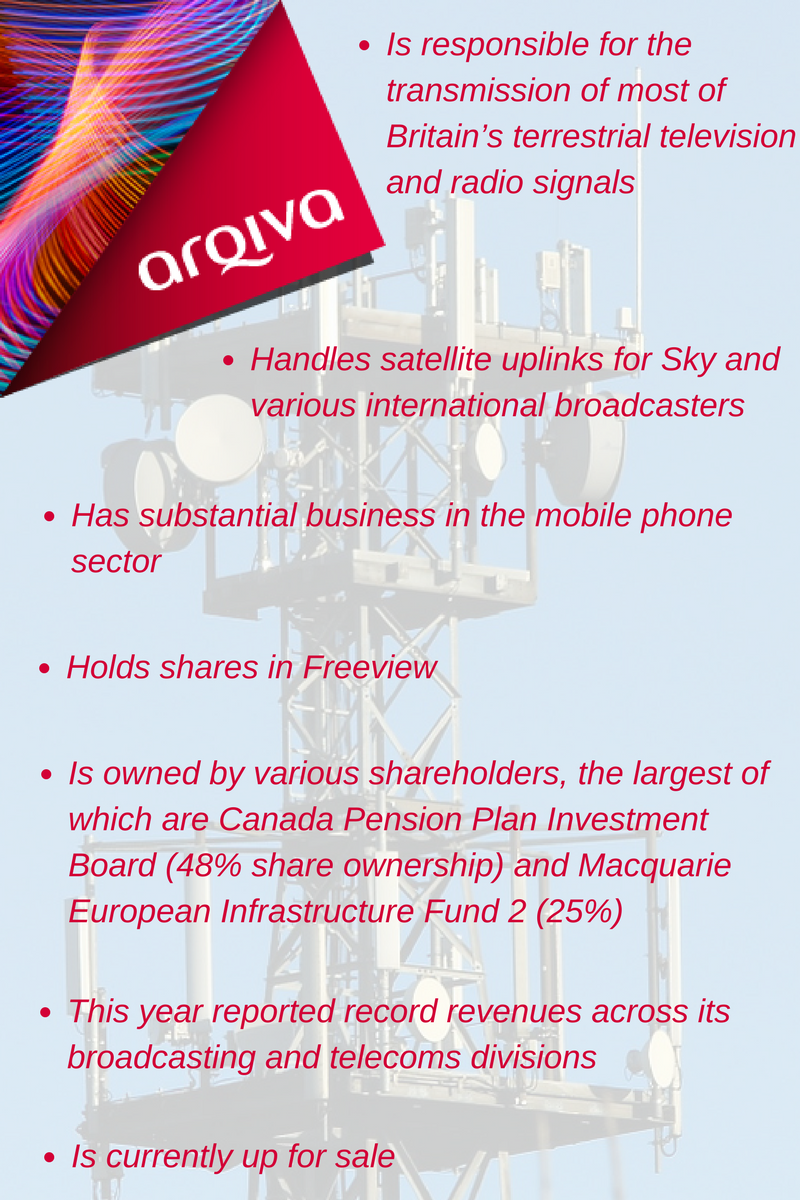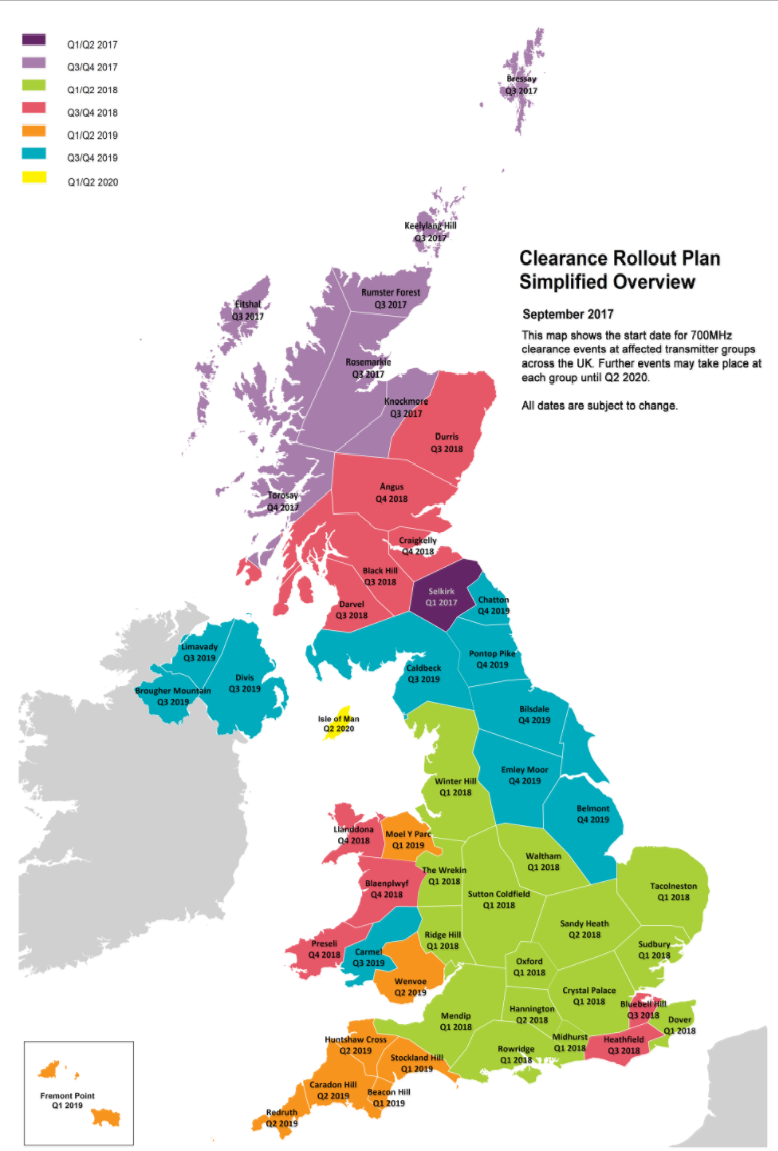
Arqiva & Ofcom paving the way for 5G with 700MHz Clearance
According to 5g.co.uk, “the largest step forward for mobile network technology yet is right around the corner”.
5G, they say, will offer not just faster connectivity (for example, downloading a full HD film in one or two seconds) but many other benefits, too (an increase in bandwidth, for instance, means that more people in a crowded location will be able to get online simultaneously).
When 5G becomes available publicly, only a small percentage of the population will be covered initially, but plans are in place to extend the service nationally.
And those plans are centred on clearing space on the spectrum that is currently occupied by many digital terrestrial TV (DTT) services.
Ofcom and 700MHz Clearance
The DTT platform currently uses spectrum in the 470-790MHz bands and, in November 2014, Ofcom decided to free up the 700MHz band (694MHz to 790MHz), which would be auctioned for use by mobile network providers and meet growing consumer demand for improved services delivered by mobile data.
Initial plans indicated that the band would be made available by the end of 2021 but later analysis suggested that consumers would derive more benefit if it was available sooner, and a new deadline was set: the second quarter of 2020.
Ofcom will sell 190MHz of high-capacity spectrum in the 2.3GHz to 3.4GHz range first, with auctions for the 3.6GHz to 3.8GHz and 700MHz bands to follow.
The communications regulator has decided that 20 MHz of spectrum in the part of the 700MHz band known as the ‘centre gap’ should be allocated for use by mobile data, and will be awarding capacity to the networks that are “likely to put it to the most efficient use in the best interests of consumers”, not just those with the biggest budgets.
Arqiva – key to it all
Working closely with Ofcom and the multiplex operators to clear the 700MHz band is Arqiva, which has contracted with major broadcasters and the regulator for the programme’s delivery.
Arqiva is responsible for planning, network design, programme management, infrastructure changes, service continuity, asset replacement and retuning broadcast transmitters to enable broadcasters to move into a lower frequency.
‘Asset replacement’ means the Hampshire-based company is responsible for upgrading and replacing between 35 and 40 main station antennas and around 300 antennas at relay sites while keeping all existing services on-air throughout the work.
The scope of the 700MHz clearance programme is slightly smaller but similar to that of the digital switch-over (DSO) programme the company delivered between 2007 and 2012, during which the UK turned off its analogue television signals and moved to a fully digital service.

Record revenues
The 700MHz Clearance programme, which is on schedule, has contributed to Arqiva's record revenues this year across its broadcasting and telecoms divisions.
The strong, and sustained, financial improvements are driven by a number of factors, including major programme rollouts (700MHz Clearance, DAB, 4G and smart metering), an improvement in programme execution and our ambitious cost reduction activities.
Source: Arqiva annual report for the year ended 30 June 2017
And all this while the company is up for sale.
But after the Singapore investment fund GIC pulled out of the $6 million auction of its transmission business, leaving Canadian property company Brookfield as the only firm bidder, Arqiva seems likely to drop that plan in favour of a stock market flotation.
The future – being tested today
5G network tests are already well under way across the world (including, in the UK, in Brighton and Basingstoke). Here’s a map of the roll-out (source):


Umbrella Company Reforms - An Overview

Product + audience + platform: why the Premier League is going its own way
